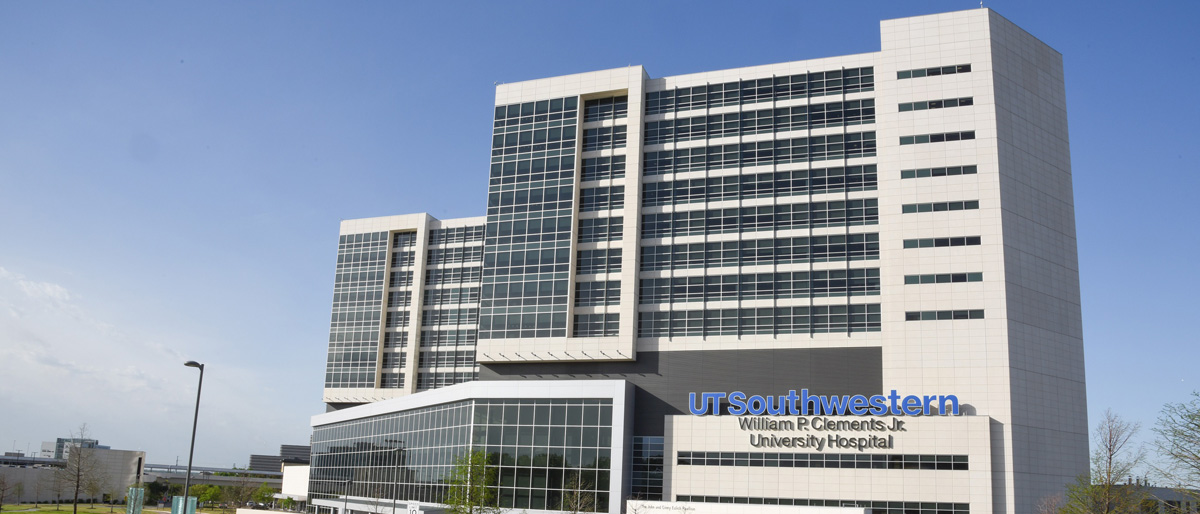Clements University Hospital recognized for quality, safety achievement

This story was originally posted on Center Times Plus on October 8, 2018.
William P. Clements Jr. University Hospital has received a national Rising Star Award for improved quality and safety efforts, ranking it within the country’s top 25 academic medical center hospitals.
The award, presented by Vizient, is based on exemplary performance in safety, mortality, clinical effectiveness, efficiency, patient centeredness, and equity of care. It follows the August announcement that UT Southwestern retained its ranking as the No. 1 hospital in Dallas-Fort Worth and the No. 2 in Texas while ranking nationally among the top 50 programs in seven clinical specialty areas, according to U.S. News & World Report’s annual Best Hospitals listings. It is the second time UT Southwestern received the Rising Star Award (2015).
“These recognitions reflect our ongoing efforts and commitment to quality and safety at Clements University Hospital, and the culture of exceptional team-based, multidisciplinary care our physicians, nurses, and staff dedicate themselves to providing daily,” said Dr. John Warner, Executive Vice President for Health System Affairs and CEO of UT Southwestern University Hospitals.
In its four years, Clements has garnered consistent recognitions for quality, safety, and patient satisfaction, resulting in increased demand for care at the hospital.
“We understand that effective, multidisciplinary teamwork saves lives and are constantly focused on providing the highest quality care to patients and families,” said Dr. William Daniel, Vice President and Chief Quality Officer.
“Our No. 1 commitment is to deliver the very best in patient-driven care,” said Susan Hernandez, Health System Chief Nurse Executive. “We achieve that – and in the process earn prestigious honors like the Rising Star Award – through genuine teamwork and an unflagging pursuit of excellence.”
Clements University Hospital, which opened in 2014, is currently expanding with a third 12-story tower scheduled to open in 2020. The new tower will house services that are now delivered at Zale Lipshy University Hospital, making Clements the clinical site of neuroscience programs associated with the Peter O’Donnell Jr. Brain Institute, while creating a net addition of 144 beds campuswide. Renovations also include an enlargement of the Emergency Department and the addition of operating rooms, interventional suites, and two parking structures. Two floors will expand inpatient cancer care available through UT Southwestern’s Harold C. Simmons Comprehensive Cancer Center, the only NCI-designated Comprehensive Cancer Center in North Texas and one of just 49 in the nation.
“When completed in 2020, the new tower will consolidate virtually all of UT Southwestern’s inpatient services in one facility and allow the Medical Center to further improve the quality of hospital care and services while improving efficiency and lowering the cost of care,” Dr. Warner said. “It positions Clements to deliver the leading-edge medical care currently available, while facilitating our discovery of health care innovations needed for future generations.”
Clements University Hospital will become be one of the largest in Texas and the nation, with more than 750 total beds, including more than 30 oncology beds and two dozen NICU beds, as well as nearly 60 operating rooms, more than 60 Emergency Department exam rooms, expanded space for imaging and transfusion services, as well as integrated collaborative space for consultations, education, and research efforts.
The expansion also prepares UT Southwestern for referrals from continued growth of the Southwestern Health Resources network, a partnership with Texas Health Resources to better integrate delivery of care across the Metroplex.
Clements’ expansion is part of a broader $875 million West Campus Facilities Replacement Plan, to unfold in five phases over 20 years, that will ultimately add 1.1 million square feet of facility space. That expansion includes the recently dedicated West Campus Building 3, a nine-story, 305,000-square-foot building that includes integrated clinic and academic space, more than 220 exam and procedure rooms, and a $40 million, 50,000-square-foot, state-of-the-art Simulation Center for training.
UT Southwestern also recently opened its three-story William P. Clements Jr. University Hospital Radiation Oncology Building, part of the Harold C. Simmons Comprehensive Cancer Center and the largest individual facility for radiation oncology in North Texas. The 63,000-square-foot facility features the latest next-generation CyberKnife technologies, the most advanced linear accelerators that produce patient-specific radiation beams, and only the second center in the U.S. to offer the GammaPod, an advanced technology to treat early stage breast cancer.
As an academic medical center with a mission to educate, discover, and heal, the Medical Center has received qualitative recognitions for its academics and research, including the ranking of UT Southwestern Medical School among the top 20 medical schools for primary care and UT Southwestern Graduate School of Biomedical Sciences among the top 30 for research in the United States. UT Southwestern also was recognized as the top institution in the “healthcare” category internationally by Nature Index 2018 Annual Tables for publishing high-quality scientific research and was ranked fifth in the world in the number of published research articles cited as significant sources in third-party patent applications, a measure of bringing discoveries to market.
“Our patients not only share our enthusiasm and passion for current leading-edge medical care, but also partner with us in discovering the health care innovations needed for future generations and training the next generation of caregivers,” Dr. Warner said. “This partnership is the foundation for all our accomplishments, and certainly for our recognitions such as the Rising Star Award.”

